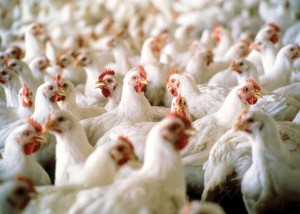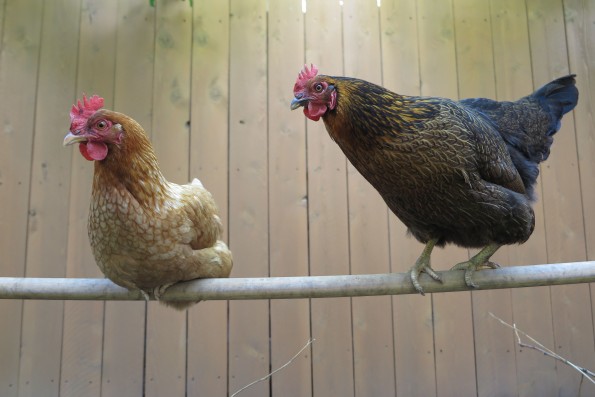If we are what we eat, then in many cases we are eating the pain, suffering and trauma that animals suffered in the deplorable conditions of factory farms. If one watches the documentary film Food Inc. an idea of the conditions in which chickens, pigs and cattle are raised.

Chickens are kept in small cages with their beaks cut off, so they don’t self mutilate. They spend their entire lives confined. If they are let out, they are unable to walk because their muscles are atrophied.
It’s very tough to watch this film, because one comes to the realization that we are all culpable accomplices in this inhumane treatment of animals every time we visit the grocery store or buy Tyson or most chicken sold in America. This film is a sad reminder that there’s something very wrong with the way Americans gain the majority of our protein.
But there is a better way proposed in the film and offered from smaller farms: free-range, organic chicken and decentralized food production. Now obviously we can’t all afford this, but for those who can, we should start spending a little more on our meat to encourage a much needed change in our agricultural methods.
Last year over 4 million chickens were killed when they contracted a deadly virus. Millions of chickens are recalled every year due to e-coli contamination. This is due to millions of chickens raised in close confinement. If one chicken gets a disease that could lead to the contamination of the consumer, they all could have it, so millions of animals are destroyed.
Massive food-born illness isn’t possible in decentralized food production because far fewer chickens can be raised in backyards small farms or even urban settings.
Raising Backyard Chickens

This summer I experimented with raising chickens. I bought seven chicks believing perhaps four or five would survive to adulthood. I heard somewhere that many chicks don’t make it to adulthood.
Just one flew the coop for two months. Then surprisingly returned a few weeks ago. She is picked on by the other chickens, but they are slowly starting to accept her. They all started laying eggs at the end of October.
The eggs are delicious. The dark orange yolk is nothing like what you get from chicken eggs bought at the grocery store. They chickens eat our kitchen scraps. They eat our stale bread, our leftovers and the produce we don’t get around to eating. They use this food, and the feed I give them, which is $17 for a 50 pound bag, and produce two useful products: manure, which I will use to fertilize my garden, and eggs. I typically get about two dozen a week in the winter and about four to six dozen a week in the summer.
My chickens have personalities, they are friendly when we let them out and they follow us around. They are surprisingly obedient when it’s time to go back to their coop. I simply clap my hands and they start running. My puppy Joey likes to help get them back to their coop.
Throughout the summer they came up with very means to escape their coop. Luckily, most of our neighbors thought they were a nice addition to the neighborhood and weren’t bothered when they would look out their windows and see our chickens grazing in their yards. One neighbor even built a little door for our chickens to enter.
I’ll be making a video on my chickens and my very unique chicken coop in the coming week. If you are considering raising chickens or have any interest in decentralized food production check back on Friday to watch.






